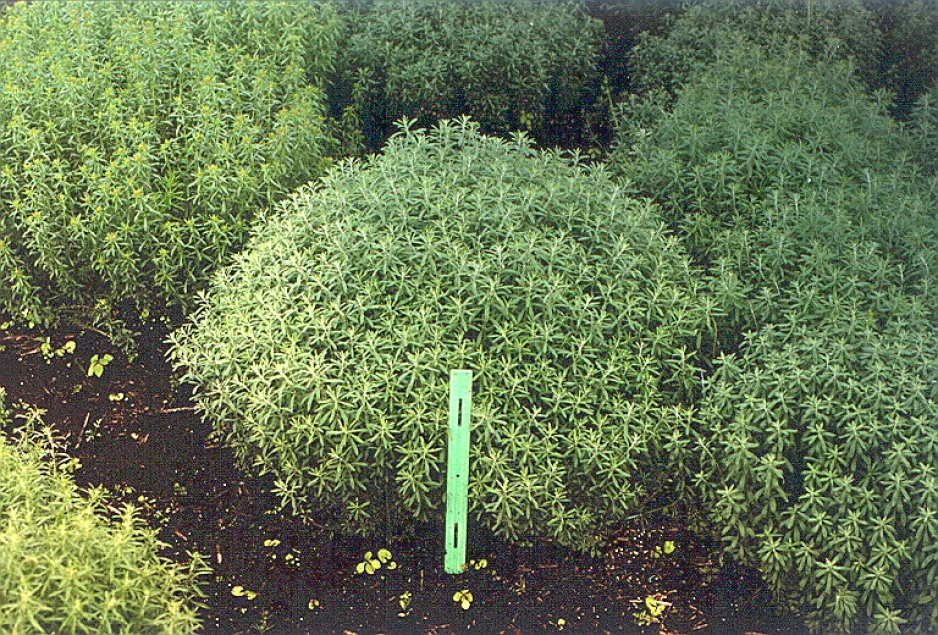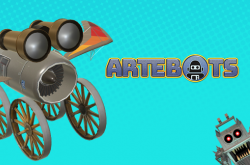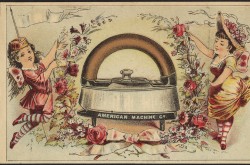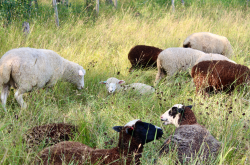Nickel in a Haystack: The Adventures of an Oral Historian
By William McRae
When asked where metals such as nickel comes from, most people would tell you that it is found in the ground. Evidently it is a metal you mine. But what if I told you nickel can actually be grown? What if instead of mining the nickel ore, you were able to farm and harvest it every year? I was a little skeptical too, until I had a chance to sit down and chat with Dr. Bruce Conard, the man behind an unconventional initiative to clean up the surface soils of an Ontario community.
Born in St-Louis, Missouri, Dr. Conard joined Inco (International Nickel Company) shortly after having received his Ph.D. in physical chemistry from Iowa State University. He began working in the Mississauga labs where he gained years of varied experience in pyrometallurgy, electrochemistry and hydrometallurgy, which eventually earned him the position of director of process research. His most remarkable work came afterwards when he became Vice President of Environmental & Health Sciences within the company. Thanks to his extensive experience in metallurgy, Dr. Conard’s primary task was to study the effects or impacts of metals on the environment, which consisted of ecosystems, animals, people and the company’s own workers. Although much of his work consisted of making the workplace a healthier and safer environment, he often found himself assessing the risks of metals in hopes to better educate outside organizations and the general public on the matter. One of the marking events of his career came in 2001, when the citizens of Port Colborne filed a class action lawsuit against Inco after it had become evident that the local refinery’s early activities had polluted the soil surface of the area with high levels of nickel, copper and cobalt.

Alyssum, Port Colborne.
At the end of the war in 1918, the Canadian government and the Allies had pressured Inco to build its refinery in Port Colborne. Its location on Lake Erie, would facilitate transportation of nickel to the US and Western Europe. “There was no nickel in Port Colborne. It had to be shipped from Copper Cliff (Sudbury). And during the years, the unloading of the nickel we did ship, and the way in which we refined the nickel, caused quite a bit of dust,” shared Conard. “And the dust went up the stack and floated with prevailing winds and then came down on land. A lot of residential land and a lot of farm land in Port Colborne.”
After several years of risk assessments conducted by both Inco and the Ontario Ministry of the Environment (MOE), Dr. Conard had publically stated that Inco’s early operations had been the cause. The people of Port Colborne decided to file the class action lawsuit as a result but the assessment also determined that the metals in the soil did not pose considerable risk to the environment, and most importantly, to the local population. The lawsuit continued on grounds that the high nickel concentrations decreased the area’s real estate value. A long court battle ensued and the judge determined that Inco was to pay $36 million to the land owners. Nonetheless, Inco appealed and the Ontario Court of Appeal reversed the lower court decision on the basis that there was no proof of property devaluation. In addition, Inco’s refinery had complied with all the environmental and government regulatory laws applicable for the time, which unfortunately had been much different before the 1960s.
“They developed certain genotypes of these plants that we tested in the Port Colborne soils,” said Conard. “We even tested one tonne of ash accumulated from incinerating the harvested biomass by putting it into the converters to recover the nickel. And it works!” he said. “Instead of corn, you’re farming nickel!”
∼ Dr. Bruce Conard
“The legacy of the metals in the soil still confronts us today” stated Conard, having worked on the case for nearly a decade, trying to eliminate as much of the nickel presence as possible. “I had the dream […] to have Inco soak the nickel out of the ground […] and put it into the converters to recover the nickel.” But what exactly did he mean by soaking the nickel out of the ground? “I wanted to use hyper-accumulating plants,” he explained to me, “plants (called Alyssum) that love to accumulate nickel into their biomass.”
He worked with some researchers from the US department of agriculture who selectively bread different types of hyperaccumulating plants to maximize their uptake of nickel both in quantity and speed. “They developed certain genotypes of these plants that we tested in the Port Colborne soils,” said Conard. “We even tested one tonne of ash accumulated from incinerating the harvested biomass by putting it into the converters to recover the nickel. And it works!” he said. “Instead of corn, you’re farming nickel!”

Testing Alyssum plants in a Port Colborne field.
This technique of acquiring nickel could be used in soils where the nickel concentration is too low to be economically viable to mine. It would also be a much less intrusive technique of collecting metals. Furthermore, it could be a way of regreening an exhausted mine site while still extracting small amounts of nickel. Conard envisioned bringing this technique of phytoremediation to warmer countries such as Indonesia. “You may get three seasons in one year [there] because of the climate. […] It would also be a social boon as subsistent farmers could make more money farming nickel than farming anything else,” stated Conard. His team got to the stage of testing Alyssum in Indonesia, making sure the plant would not be invasive in a foreign country. “That’s about the time I retired and it, unfortunately, hasn’t gone any further,” said Conard.
To date, a few other countries such as the US and France have studied and experimented with Alyssum but none seem to have moved past the experimental phase of harvesting the metals. From the available research, we could conclude that there may still be much to learn about the plant, its optimal harvesting phase and its invasiveness in certain regions. “I still have a pipe dream of it,” confessed Conard, “but these things need a champion.” Perhaps the dream simply needs a new Dr. Bruce Conard.



















